
This Nrich question tackles proportion in a real context. It also needs systematic thinking to sort out the information and take a step-by-step route to the solution.
- Subject:
- Mathematics
- Material Type:
- Activity/Lab
- Date Added:
- 06/17/2021

This Nrich question tackles proportion in a real context. It also needs systematic thinking to sort out the information and take a step-by-step route to the solution.
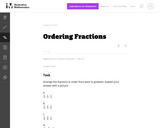
The purpose of this task is to extend students' understanding of fraction comparison.

The purpose of this task is to present students with a situation in which they need to divide a whole number by a unit fraction in order to find a solution.
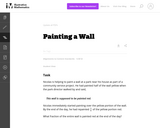
The purpose of this task is for students to find the answer to a question in context that can be represented by fraction multiplication. This task is appropriate for either instruction or assessment depending on how it is used and where students are in their understanding of fraction multiplication.

The purpose of this task is to provide students with a situation in which it is natural for them to divide a unit fraction by a non-zero whole number.
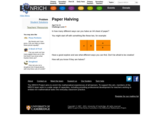
This Nrich activity offers free exploration that can help youngsters with their development of the concepts associated with fractions. It provides a chance for meaningful mathematical discussion and sharing of current understanding, in addition to offering opportunities for challenging misconceptions.

This short video and interactive assessment activity is designed to teach second graders about fractions of a whole.
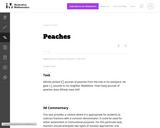
This task provides a context where it is appropriate for students to subtract fractions with a common denominator; it could be used for either assessment or instructional purposes.
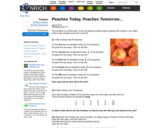
This Nrich problem is in three parts, with each part becoming more open-ended and requiring more reasoning, giving students a chance to develop their skills at solving problems with fractions and then applying those skills in a more challenging context. By listening to others' approaches, students will be encouraged to persevere and continue to improve on their solution to the final part of the problem.

PhET provides fun, free, interactive, research-based simulations for math and science. The simulations are written in HTML5, and can be used online or downloaded to your computer. This is free for all students and teachers. There are hundreds of lesson plans and materials using the simulations.

This Nrich problem is a good challenge for those children who are competent with calculating using fractions and decimals.

The purpose of this task is to have students add mixed numbers with like denominators. This task illustrates the different kinds of solution approaches students might take to such a task.
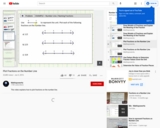
This video explains how to plot fractions on the number line.
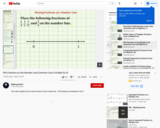
This video explains how to plot fraction on the number line. The fractions are between 0 and 1.
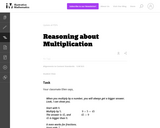
This task helps students understand that when you multiply by a number you always get a bigger number.
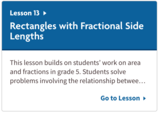
Unit 4: Dividing Fractions
Lesson 13: Rectangles with Fractional Side Lengths
This lesson builds on students’ work on area and fractions in grade 5. Students solve problems involving the relationship between area and side lengths of rectangles, in cases where these measurements can be fractions. Knowing that the area of a rectangle can be found by multiplying its side lengths, and knowing the relationship between multiplication and division, they use division to find an unknown side length when the other side length and the area are given.
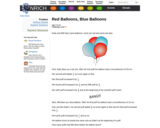
This problem would be a good one when doing calculations with fractions. It also requires logical thinking and organizing of results. Different strategies and approaches can be taken: knowledge of addition, or multiples, or an understanding of fractions can be used to arrive at a solution.

This short video and interactive assessment activity is designed to teach fifth graders about reducing simplest form - word problems.
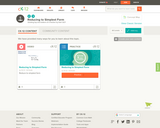
This short video and interactive assessment activity is designed to teach fifth graders about reducing to simplest form.
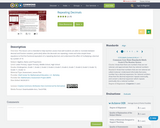
This lesson unit is intended to help teachers assess how well students are able to: translate between decimal and fraction notation, particularly when the decimals are repeating; create and solve simple linear equations to find the fractional equivalent of a repeating decimal; and understand the effect of multiplying a decimal by a power of 10.